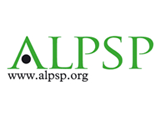
The Association of Learned and Professional Society Publishers (ALPSP) has published its report on the state of the publishing industry, Scholarly Journals Publishing Practice. Although the report shows that publishers are generally in good health, the ALPSP warned that the report should be seen as a benchmark against which to assess the future effects of changes in scholarly publishing, particularly the move towards open access.
“Our report has taken the pulse of the industry at a key point in time,” said Audrey McCulloch, Chief Executive of ALPSP. “Mandates from bodies such as Research Councils UK (RCUK) on open access have yet to affect the data we have collected, and I fear that our next report will reveal some very detrimental effects for learned societies – who have a key role in academic research – if current policies on open access, particularly very short embargo periods, are not reconsidered.”
Currently RCUK are supportive of ‘Gold Open Access’, where the researcher pays an article publication charge (APC) to enable the immediate release of the research. However, recognising that there may not be sufficient funding for this to be achieved for all articles, RCUK are also accepting what is called the ‘Green route’, where an accepted manuscript is made freely available following a suitable embargo period.
“The length of the embargo period is absolutely key, particularly to smaller and learned society publishers,” explains McCulloch. “If the embargo period is too short then there is not enough time to recoup the costs of publication through sales and subscriptions before it becomes freely available. The RCUK’s current desire to set an embargo period as short as 6 months will leave many smaller publishers and learned societies unable to cover their publishing costs.”
The ALPSP concerns over 6 month embargoes were made clear in a survey carried out of international librarians. This revealed that only 56% of libraries in the Science, Technology and Medical area would continue to subscribe and only 35% in the Arts Humanities and Social Sciences, if the majority of content was freely accessible within 6 months of publication.
The Learned and Professional Societies that ALPSP represents exist to promote and support an academic discipline or closely related group of subject disciplines. Most, if not all, are not-for-profit, supporting themselves through their membership fees, services and in many instances, through publishing income.
“Learned and Professional Societies pride themselves on producing and publishing high quality information and invest considerable resources to ensure such high standards are maintained,” says McCulloch. “They are a key part of the scholarly research ecosystem and if one of their main functions and sources of funding is put at risk this will lead to many unforeseen problems in other parts of the system. The bottom line is that Learned and Professional Societies and publishers provide a service that academics and others highly value. That service comes at a cost.”
The report by the ALPSP, Scholarly Journals Publishing Practice, is the fourth survey in a series that looks into scholarly publishing practice for journals, and was conducted during the summer of 2012. It follows on from earlier surveys conducted in 2003, 2005 and 2008 published by ALPSP as editions of Scholarly Publishing Practice.
Key findings of the report
· Publishers of all sizes continue to launch new titles and acquire new titles; there are more launches and acquisitions than closures. Smaller publishers have shown the most growth over the past four years.
· Revenue streams are changing, with the majority of publishers showing a decrease in income from single subscription sales and an increase in income from other revenue streams, such as aggregator sales, consortia sales, pay-per-view and sales of content collections.
· Pay per view as a revenue stream has increased dramatically 65% of publishers offered it in 2003 and 83% in 2012.
· Large publishers have done the most to monetise directly their back files and also to provide the greatest flexibility in content purchasing, especially of content packages.
· Most publishers offer perpetual access to subscribers. Libraries argue that once they have paid for the journal they should have ‘life-long’ access however publishers argue that there are continuing costs for hosting the online material.
· Nearly all publishers have now moved to automated systems for receipt of manuscripts through to publication. In 2005 39% did not use automated systems this has dropped to only 5% in 2012
· Larger publishers have moved away from demanding the assignment of copyright from authors in favour of a licence to publish.
· In 2008 half of publishers had some form of open access this rose to two thirds by 2012.
· Most publishers now have a hybrid model in place across all titles (i.e. author has option to pay for their article to be open access). However take up of the hybrid model by authors is minimal at 1% of articles published.
· There has been a large increase in publishers offering open access after an embargo period (normally 12 months). In 2005 25% of publishers offered this and this rose to 42% in 2012.
· Most publishers, regardless of size, are working with Google and Google Scholar. Fewer publishers are working with the library technology companies.
· Because the demand for text and data mining is so low, it is not yet commonly offered by the majority of publishers.
· Social Media is primarily used for promotion of articles/publications and far less so for interacting/engaging with audience/building a community
· An as yet unanswered question is whether use of social media e.g: Twitter, can lead to increased citations



























